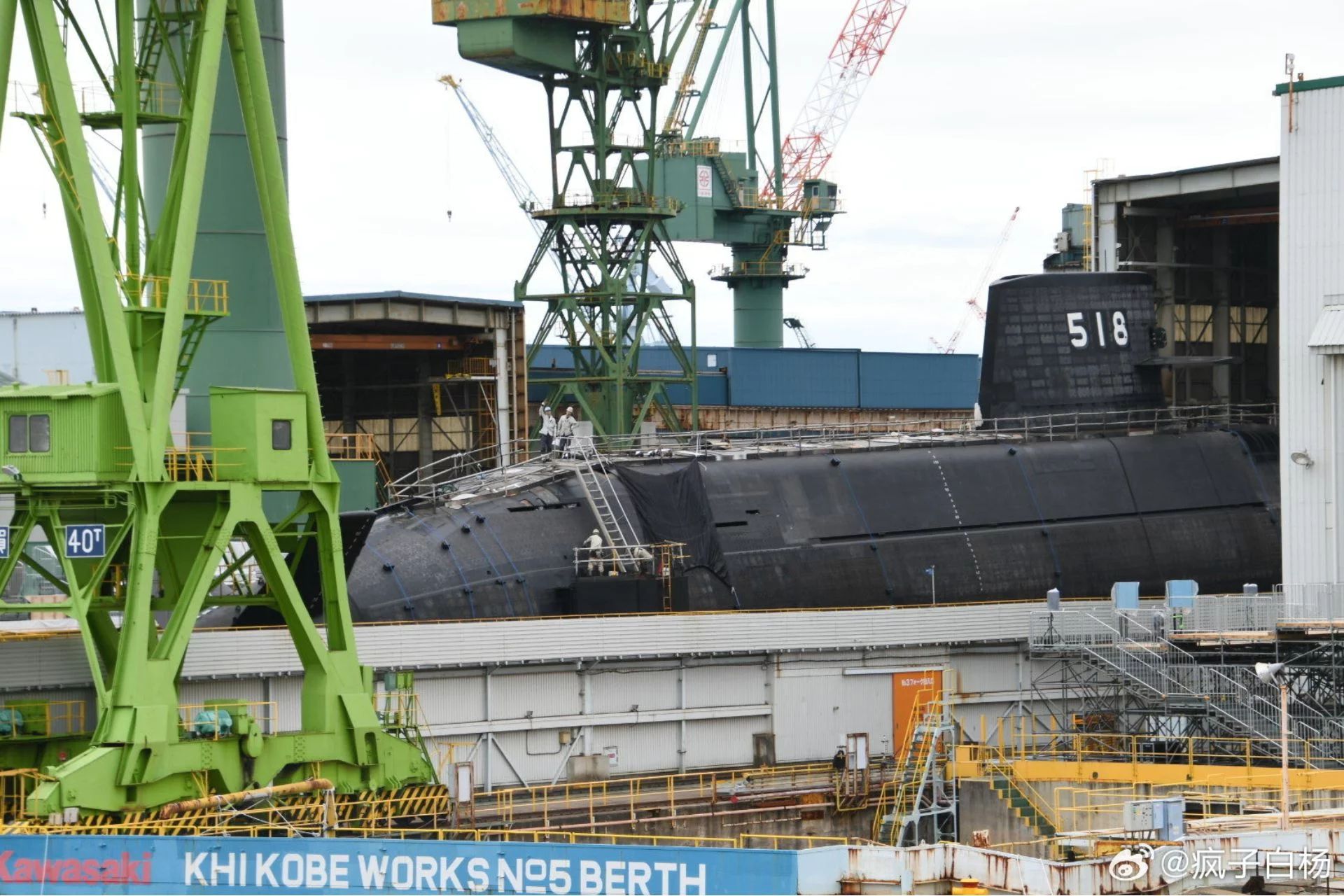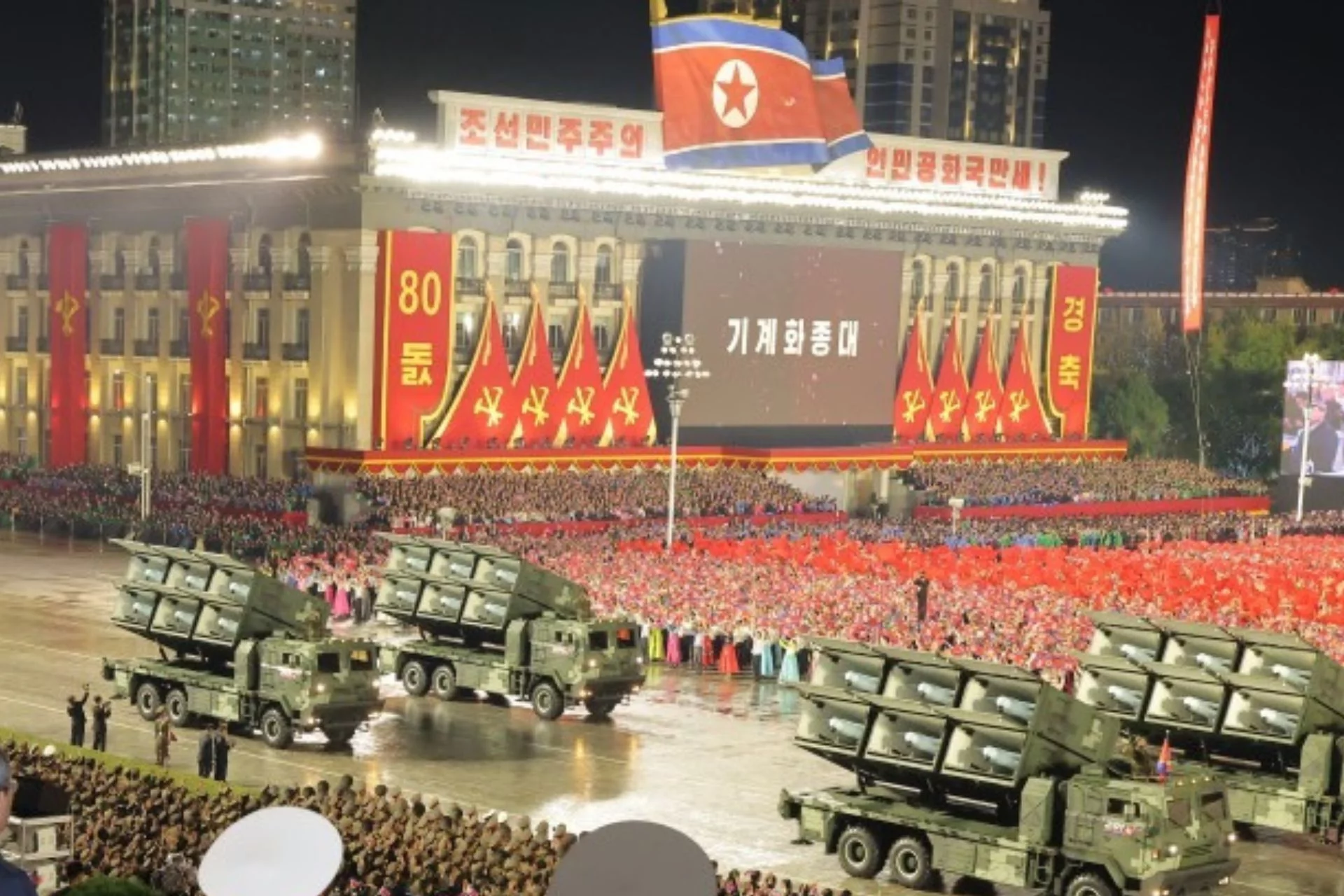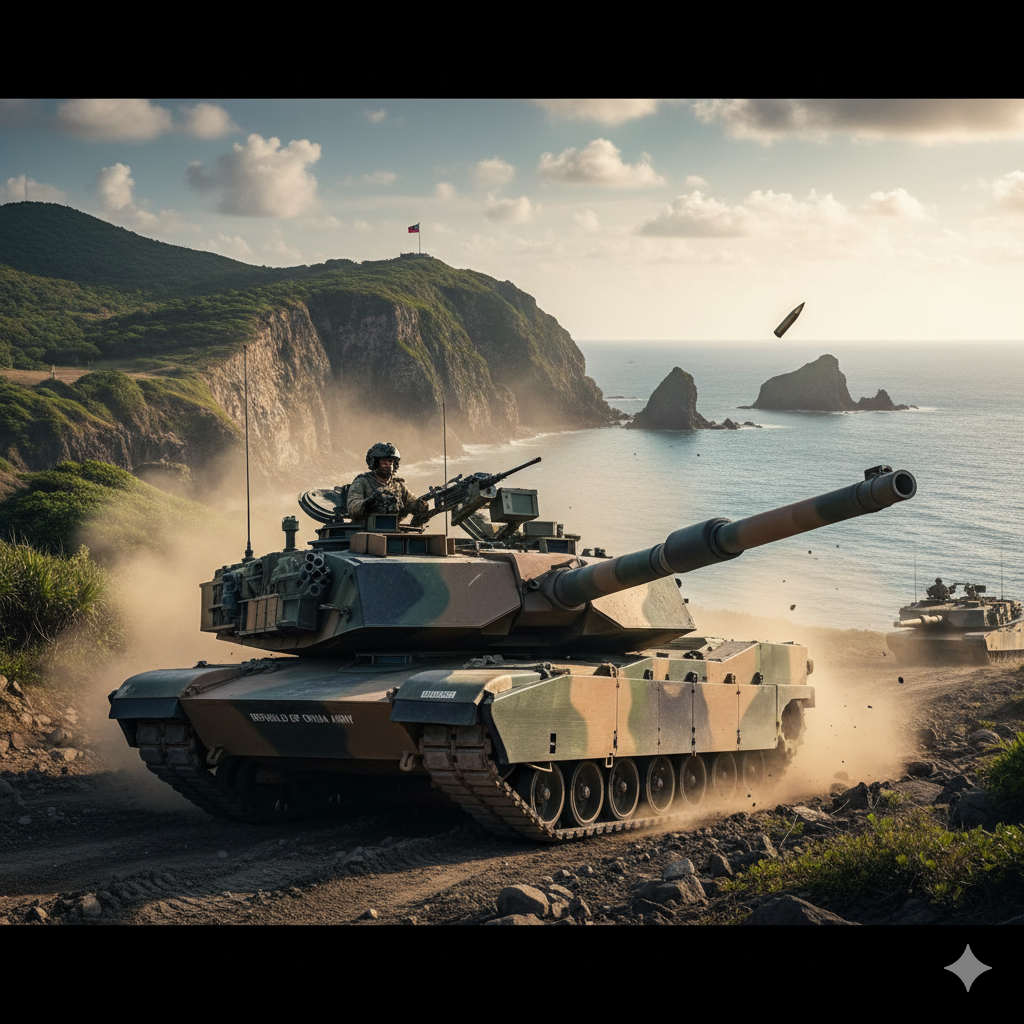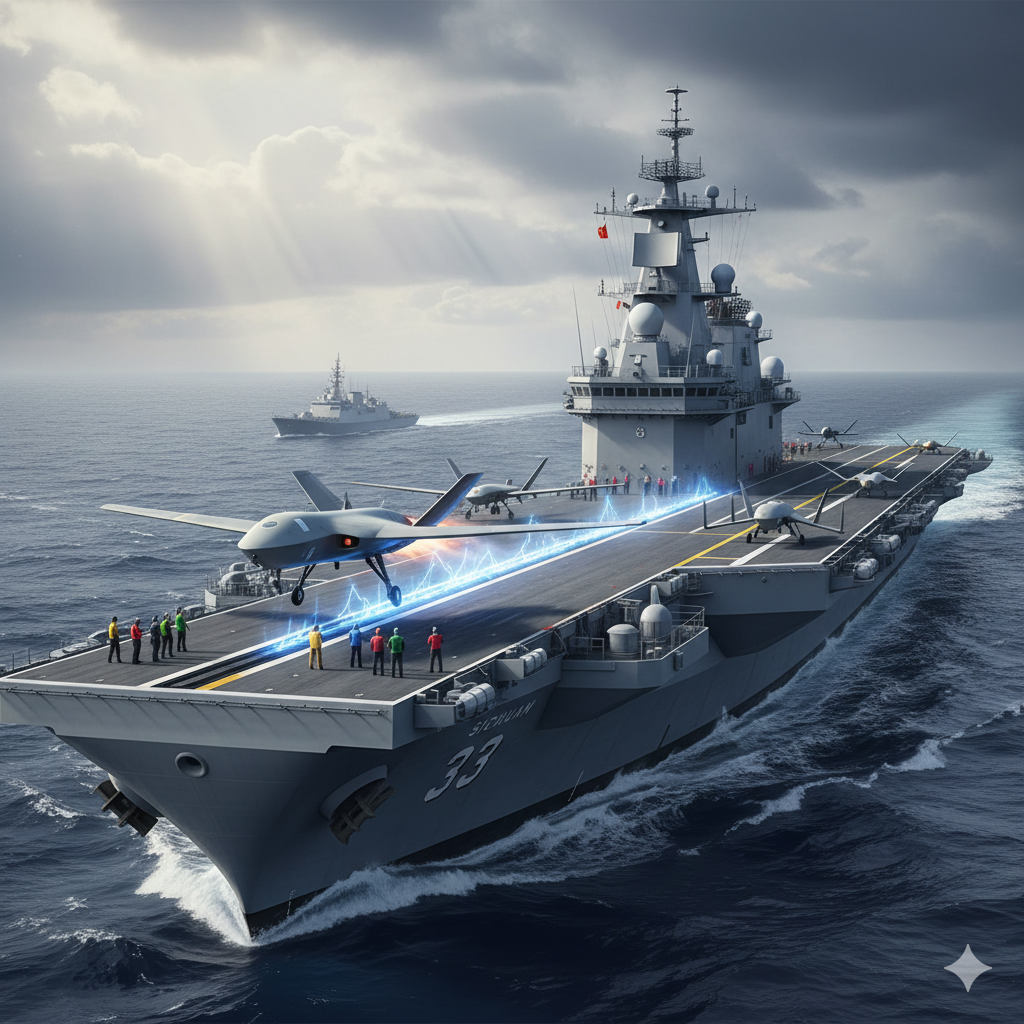In a move that’s set to bolster Japan’s maritime defenses amid rising tensions in the Pacific, the Japan Maritime Self-Defense Force (JMSDF) is preparing to unveil its latest technological marvel – the sixth vessel in the advanced Taigei-class submarine lineup. Scheduled for a ceremonial naming and launch on October 14, 2025, this event marks another significant step in Japan’s ongoing efforts to modernize its underwater fleet. As regional undersea patrols intensify due to increased activities from neighboring powers like China and Russia, this new submarine promises to enhance Japan’s strategic capabilities in contested waters. The ceremony, taking place at Kawasaki Heavy Industries’ Kobe Shipyard, underscores the nation’s commitment to maintaining a robust and technologically superior naval presence.

A festive launch ceremony for a Taigei-class submarine, showcasing the vessel adorned with flags and decorations at the shipyard.
The Taigei-class submarines represent a pinnacle of modern diesel-electric attack submarine design, building upon the successes of their predecessors in the Sōryū class. These vessels are engineered for stealth, endurance, and lethality, making them ideal for operations in the complex geopolitical landscape of the Asia-Pacific region. The upcoming launch of what is expected to be hull number SS-518 follows a pattern of alternating construction between Kawasaki Heavy Industries (KHI) and Mitsubishi Heavy Industries (MHI), ensuring a steady production rhythm that supports Japan’s goal of maintaining a fleet of at least 22 operational submarines.
At the heart of the Taigei-class’s innovation is its adoption of lithium-ion battery technology, a feature that sets it apart from traditional diesel-electric submarines. This system, first tested in the later Sōryū-class boats like Ōryū and Tōryū, allows for extended submerged operations without the need for air-independent propulsion (AIP) systems. By eliminating AIP, the design simplifies maintenance and reduces logistical burdens while still providing superior underwater endurance. Publicly available specifications indicate that these submarines have a surfaced displacement of approximately 3,000 tons, with some sources suggesting a submerged displacement closer to 4,300 tons. Measuring about 84 meters in length, with a beam of 9.1 meters and a draught of 10.4 meters, the Taigei-class boats are compact yet powerful, crewed by around 60 personnel.
The propulsion system combines advanced Kawasaki diesel engines with electric motors, enabling a maximum submerged speed of around 20 knots. This capability allows for rapid repositioning and sustained high-speed operations underwater, minimizing the need for frequent snorkeling – a process that can expose submarines to detection. In an era where anti-submarine warfare (ASW) technologies are advancing rapidly, reducing acoustic and visual signatures is crucial. The lithium-ion batteries enable longer periods of silent running, giving commanders more flexibility in patrol strategies, whether defending key chokepoints like the Miyako Strait or conducting surveillance in the East China Sea.
Sensor suites on the Taigei-class are equally impressive, featuring the ZQQ-8 sonar system for enhanced detection and tracking of underwater threats. Complementing this is the ZPS-6H surface search and navigation radar, along with optronic masts for periscope-like observations without fully surfacing. The integrated combat system, possibly based on the OYX-1 architecture, fuses data from various sensors, including electronic support measures (ESM) like the ZQX-12, to provide a comprehensive tactical picture. These incremental upgrades ensure that the submarine can operate effectively in high-threat environments, where quick decision-making and low observability are paramount.
Armament-wise, the Taigei-class adheres to a proven formula, equipped with six 533mm torpedo tubes capable of launching Type 89 or Type 18 heavyweight torpedoes. For surface engagements, the submarines can deploy UGM-84 Harpoon anti-ship missiles, providing a standoff strike capability that extends Japan’s defensive reach. While the JMSDF maintains discretion about exact loadouts, the flexibility to mix torpedoes and missiles allows for tailored missions, from anti-submarine warfare to interdiction of surface fleets. This versatility is particularly valuable in scenarios involving blue-water operations or ambushes in strategic straits such as the Bungo or Tsugaru.
The tactical advantages offered by the Taigei-class are profound, especially in the context of intensifying undersea activities. With China’s People’s Liberation Army Navy (PLAN) expanding its submarine fleet and conducting more frequent passages through sensitive areas, and Russia’s Pacific Fleet engaging in presence operations, Japan’s submarines serve as a critical deterrent. The ability to maintain higher sustained speeds underwater translates to fewer vulnerabilities during patrols, allowing for better shadowing of potential adversaries without compromising stealth. In defensive roles, these boats can form barriers along the first island chain, complicating enemy ASW efforts and supporting allied operations with partners like the United States.
From a broader force-structure perspective, the launch of SS-518 aligns with Japan’s long-term naval strategy. The first Taigei-class submarine, JS Taigei (SS-513), was launched in 2020 and commissioned in 2022, initially serving as a testbed for lithium-ion technology. Subsequent vessels, including Hakugei (SS-514) and Jingei (SS-515), have been commissioned progressively, with Raigei (SS-516) entering service in March 2025. SS-517 is on track for commissioning in the following year, and the program aims for at least eight units in total. This buildup facilitates the phased retirement of older Oyashio-class submarines, ensuring no gaps in operational readiness. The alternating build contracts between KHI and MHI not only distribute industrial workload but also foster competition and innovation in submarine construction.
The ceremony itself, overseen by Vice Admiral Matsumoto Tamotsu, Commander of the Kure District, is set for a brief window from 11:50 a.m. to 12:05 p.m. local time. The ship’s name will be revealed during the event, adding an element of anticipation. Such launches are more than mere formalities; they symbolize Japan’s restrained yet resolute approach to defense. By steadily enhancing its submarine force, Tokyo raises the stakes for any potential aggressor, contributing to regional stability and deterrence.

The Hakugei, a Taigei-class submarine, during its delivery ceremony, highlighting the sleek design of these advanced vessels.
Looking ahead, the integration of these submarines into the JMSDF fleet will likely influence allied planning, particularly within frameworks like the Quad (comprising Japan, the US, Australia, and India). As underwater domains become increasingly contested, technologies like those in the Taigei-class could pave the way for future collaborations, such as joint exercises or shared intelligence on submarine operations.
In summary, the launch of this sixth Taigei-class submarine is a testament to Japan’s engineering prowess and strategic foresight. As undersea patrols continue to escalate in intensity, this addition to the fleet not only strengthens national security but also sends a clear message about Japan’s readiness to defend its interests in an unpredictable maritime environment.




